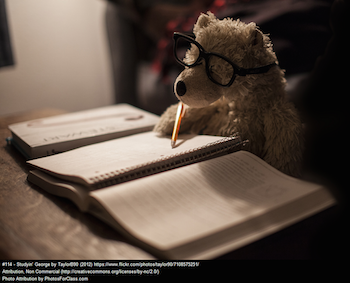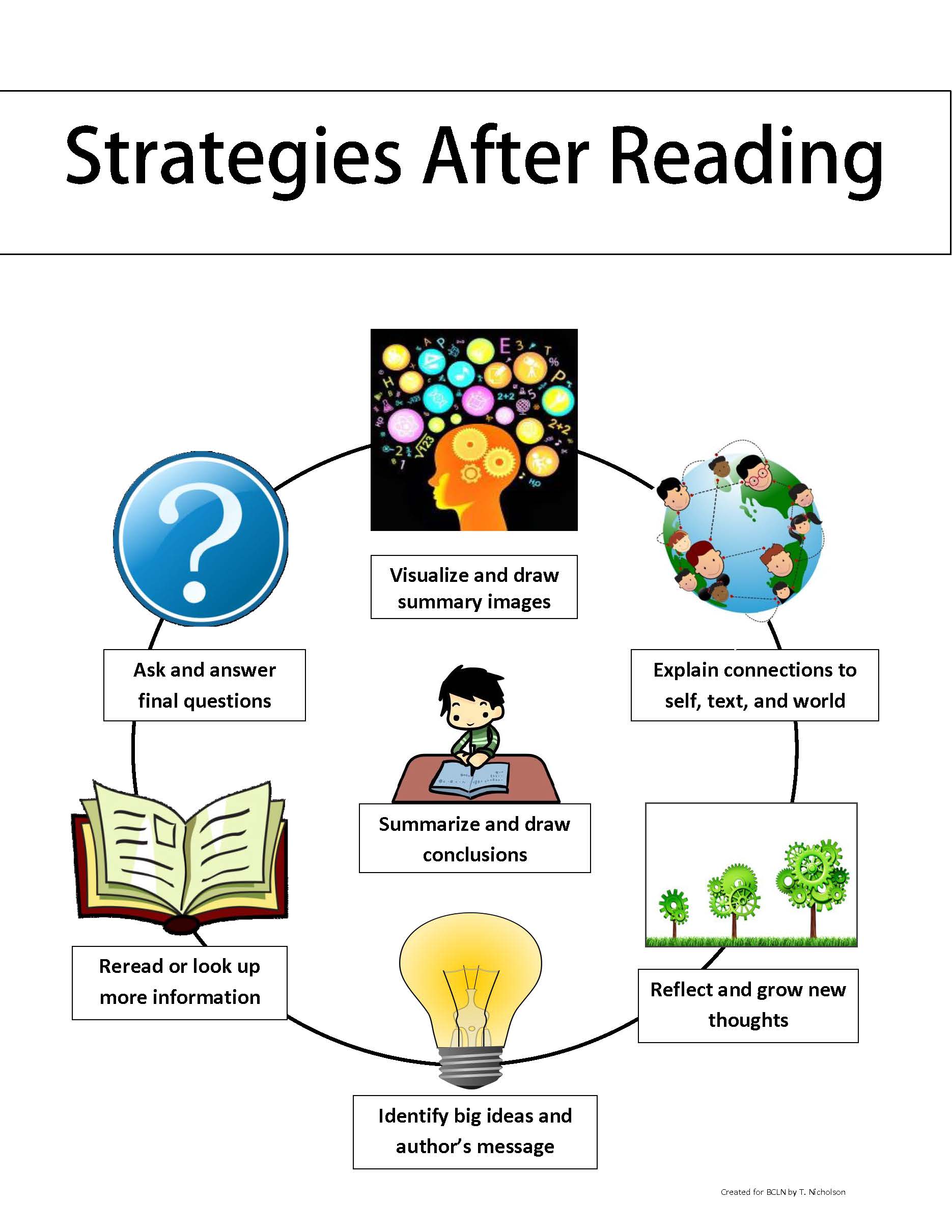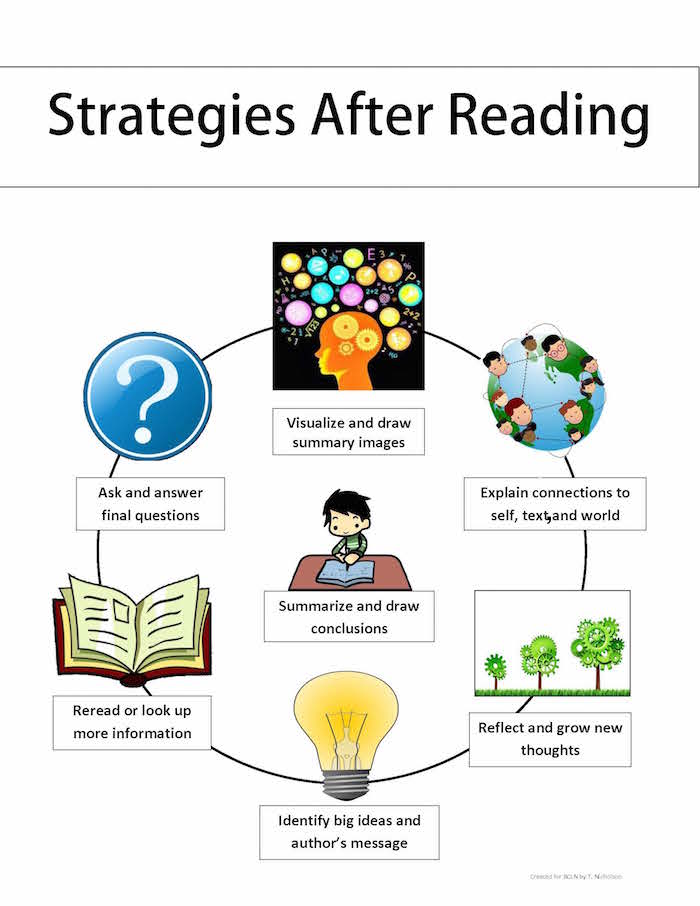1.4 Strategies After Reading
| Site: | Cowichan Valley School District - Moodle |
| Course: | ELA5, CSS, Sferrazza |
| Book: | 1.4 Strategies After Reading |
| Printed by: | Guest user |
| Date: | Monday, 15 December 2025, 2:53 AM |
Description
Can you...

Learning Targets
By the end of lessons 1.1 to 1.4, you should be able to say YES to the following questions.
- Can I construct meaningful personal connections to what I am reading?
- Can I understand the importance of reading strategies before, after, and during reading?
- Can I implement reading strategies to improve my reading experience and understanding of my online instructions?
- Can I implement reading strategies to improve my reading experience and understanding of literature within my course?

Strategies After Reading
 Think of the strategies in this lesson for after you have finished your reading as the big party after a great event.
Think of the strategies in this lesson for after you have finished your reading as the big party after a great event.
This is a time to savour favourite characters, tie up loose ends, and make conclusions about all the new information you have just soaked in.
Strategies After Reading Poster
Refer to this poster for tips on what to do after reading.

Summarize and Make Notes
Now that you have read all of the text, you want to sum it up. Write down some notes about key events and the final outcome.
It can be point form or a paragraph, depending on the purpose. When you write, pretend you are quickly explaining the text to someone who has never read it.
In fact, it is a good idea to talk to someone about what you read. You can even record yourself and use that to make your summary.
Also, think about what conclusions you can make about this text. Some of the ideas the author is writing about might not be explicitly written, but you can still get the message.
Visualize and Draw Pictures
Visualizing is good to do after you have read text, too. Below are ideas of things you can create visuals for. (Remember you can draw, cutout images from magazines. or take images from the Internet to do this for you.)
Create images to represent key events or discussion points from the text.
If it is a book or short story, create images of what would happen next after this story.
If it is a book or short story, create images of setting, characters, conflict, etc.
If it is instructions, you can create images to represent each step.
Use your summary notes and visuals to create a poster.
Explain Connections
After you have read the text and summarized what happened, think about how this text connects to you, other books or movies, and the world in general.
Explain the connections you see. You can talk to someone about them and/or write your thoughts down.
One strategy is to make a web or use a graphic organizer to brainstorm all the connections you can make between your text with the real world.
(Think: This reminds me of....)
Reflect and Grow
Did the information in this text cause you to think new thoughts? Did it offer a different perspective or shed new light on a topic?
Reflect on what you have read and learned. Then see how you can incorporate these new ideas into how you see yourself and the world. Grow new thoughts and grow your brain!
Identify Big Ideas
After you have read the book, you should have a clear idea about what the author's message is. You should be able to identify the big ideas the author wants the reader to take away.
Think about what you think the author hopes readers will learn, the big ideas the author is sharing, or the important messages about life that are embedded in a story. You can talk or write about this in paragraph or note form.
Reread and Look Up New Words
Know that you have read the book, everything should be clear to you. If it is not, go back and read sections you had questions about. Sometimes having read the whole book will help you understand parts you missed earlier.
If this text has made you curious to find out more about a certain topic - then do some research to find out more. This can be through reading other related books or searching the Internet on a specific topic. Having background information can help you make more connections and better understand what you have read.
Ask Questions
By the ending of the book, any questions and predictions you had throughout should be wrapped up.
Still, it is good to ask further questions. If it is a book or short story, ask yourself what would happen next if there was a book #2? What would I like to read next or learn more about as a result of this book?
If you read instructions or information, wonder what the next instructions or units would be about.
Think about how you feel about this text and if you liked what you read. Why or why not?
Create a Poster
A good way to process learning after reading text is to create a poster with key points and visuals. It is easy to read and to review for studying. This poster was created based on the notes for this chapter. :-)

Your Turn!
Now it is your turn.
Based on the notes and images you created in the last unit on nouns, now create a poster. Your poster should include:
- A title
- A short definition of an adjective
- Examples
- Images that relate and will help you remember the information
- Organization in an eye-pleasing fashion
You can do this on a computer or by hand. Check out this video for tips on making a poster.
Then submit it to the 1.3 - 1.4 Strategies After Reading Assignment drop box.